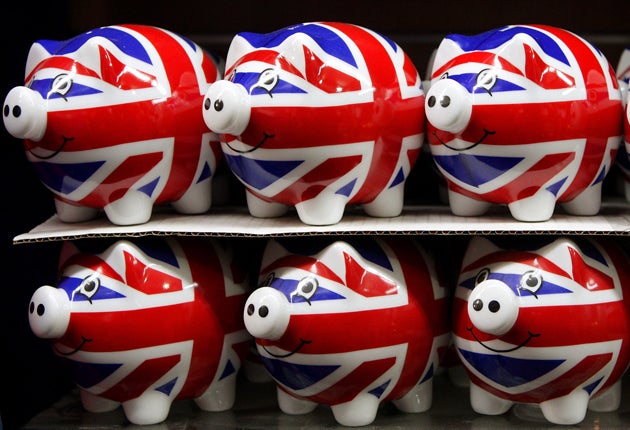What to do with savings if you’re steering clear of property
With inflation creeping up and a possible interest rate rise on the cards, how can you make the most of those hard-won savings?

If you’re one of the nation’s savers you’d be forgiven for experiencing an overwhelming sense of frustration.
A year’s worth of headlines suggest you should be laughing all the way to the bank – having, perhaps, saved far more than usual thanks to a unique set of circumstances.
But that cash probably hasn’t done you many favours since, especially if it is languishing in a savings account. Interest rates are dismally low, and providers have snatched away those that once paid out anything approaching a reasonable rate of interest.
We know why. The Bank of England base rate has been at a historically low level of 0.1 per cent for more than a year, after it was cut in response to the coronavirus pandemic in March 2020.
This year the economy has seen strong growth, thanks in part to the successful vaccine rollout. This has led to some predicting an interest rate rise by the bank’s MPC (monetary policy committee), although that probably won’t kick in until we’ve seen a prolonged period of economic stability.
Not over yet
Factors like the Indian variant of the coronavirus could mean that rates remain at their current low for some time yet.
Plenty of other unique circumstances could derail the UK’s recovery too, including the government’s furlough scheme closing in October. At the moment the scheme is propping up the economy and helping millions of people to remain in work, but when it ends, unemployment levels may rise.
The termination of the temporary stamp duty holiday, which is due to end in its current form in June (though it will remain in place on lower-priced properties for a further few months), is also expected to have an impact on the economy. The scheme has played a major role in a huge surge in the housing market, with house prices rising annually by 10.2 per cent to March 2021, and this is likely to tail off when the tax returns to its normal rate.
The base rate decision is made by looking at lots of different factors, and the decision to change it or keep it at the same level also relies on inflation. The government’s target inflation level is 2 per cent, and the MPC takes this into account when making its decision.
It rose in April to 1.5 per cent, from 0.7 per cent in March, the fastest rise since the start of the pandemic. If this rate continues it could pressure the MPC into changing the base rate.
This isn’t the first time savers have seen low rates. After the financial crisis, rates fell to 1 per cent in February 2009 and then 0.5 per cent a month later. They remained at this level until August 2016, when they fell again to 0.25 per cent. After this low, they slowly started to rise again until the pandemic hit last year.
The good news. Ish.
If you’re one of the estimated 6 million accidental savers created by the pandemic, and you’re not spending your money in the property market, you’re probably keeping a close eye on the savings market, and the good news is that accounts are getting better. Some providers are even increasing the rate of interest they pay.
Rachel Springall, spokesperson for Moneyfacts, said: “The savings landscape has been shaken due to the impact of the pandemic, but in recent weeks we are starting to see small signs of stabilisation after months of rate cuts and withdrawals.
“The impact of inflation on cash savings is evident due to the low interest rate environment, and in the months to come savers may have to rethink their risk aversion if they are looking to beat the eroding power of inflation.”
In the current climate, savers may want to look at accounts where they can get their money out quickly, rather than long-term fixed-rate accounts or even investments, which require a longer timeframe to earn a return.
The best rate you can get at the moment for a one-year fixed-rate account is around 0.95 per cent, while if you went for a five-year account, it’s not much better, with the market-leading account paying 1.5 per cent.
There’s also the option of waiting to see if rates rise, but if you have money in an easy-access account you should still be able to switch without penalty if this happens.
Rachel adds: “Interest rates have dropped year on year, and whilst it is hoped they will improve, it may be a slow process. However we have started to see some competition, with one-year fixed bonds fuelled by the challenger banks.
“Savers could indeed wait to see over the next few weeks if rates improve further, but there is no guarantee, and rates could change dependent on demand.”
Subscribe to Independent Premium to bookmark this article
Want to bookmark your favourite articles and stories to read or reference later? Start your Independent Premium subscription today.

Join our commenting forum
Join thought-provoking conversations, follow other Independent readers and see their replies